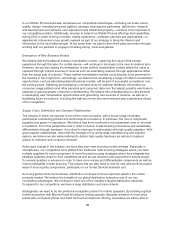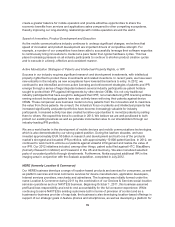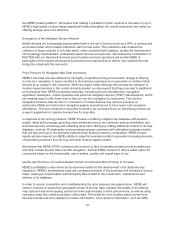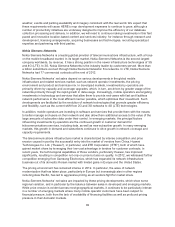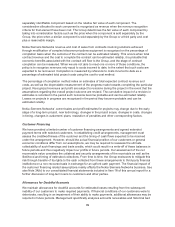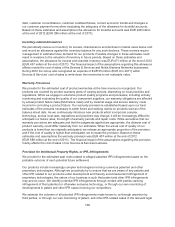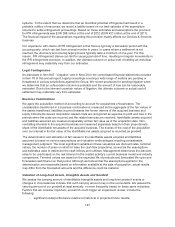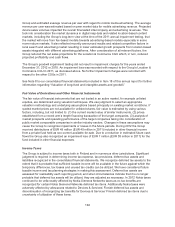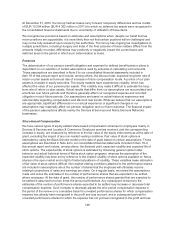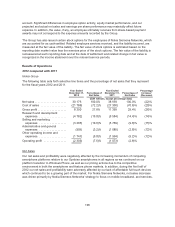Nokia 2012 Annual Report Download - page 99
Download and view the complete annual report
Please find page 99 of the 2012 Nokia annual report below. You can navigate through the pages in the report by either clicking on the pages listed below, or by using the keyword search tool below to find specific information within the annual report.Critical Accounting Policies
As of January 1, 2013 our Location & Commerce business and reportable segment was renamed
HERE. The name Location & Commerce is used in the following discussion of critical accounting
policies.
Our accounting policies affecting our financial condition and results of operations are more fully
described in Note 1 to our consolidated financial statements included in Item 18 of this annual report.
Some of our accounting policies require the application of judgment by management in selecting
appropriate assumptions for calculating financial estimates, which inherently contain some degree of
uncertainty. Management bases its estimates on historical experience and various other assumptions
that are believed to be reasonable under the circumstances. The related results form the basis for
making judgments about reported carrying values of assets and liabilities and reported amounts of
revenues and expenses that may not be readily apparent from other sources. The Group will revise
material estimates if changes occur in the circumstances on which an estimate was based or as a
result of new information or more experience. Actual results may differ from current estimates under
different assumptions or conditions. The estimates affect all our businesses equally unless otherwise
indicated.
The following paragraphs discuss critical accounting policies and related judgments and estimates
used in the preparation of our consolidated financial statements. We have discussed the application of
these critical accounting estimates with our Board of Directors and Audit Committee.
Revenue Recognition
Majority of the Group’s sales are recognized when the significant risks and rewards of ownership have
transferred to the buyer, continuing managerial involvement usually associated with ownership and
effective control have ceased, the amount of revenue can be measured reliably, it is probable that
economic benefits associated with the transaction will flow to the Group, and the costs incurred or to
be incurred in respect of the transaction can be measured reliably. The remainder of revenue is
recorded under the percentage of completion method.
Devices & Services and certain Location & Commerce and Nokia Siemens Networks revenues are
generally recognized when the significant risks and rewards of ownership have transferred to the
buyer, continuing managerial involvement usually associated with ownership and effective control have
ceased, the amount of revenue can be measured reliably, it is probable that economic benefits
associated with the transaction will flow to the Group and the costs incurred or to be incurred in respect
of the transaction can be measured reliably. This requires us to assess at the point of delivery whether
these criteria have been met. When management determines that such criteria have been met,
revenue is recognized. We record estimated reductions to revenue for special pricing agreements,
price protection and other volume based discounts at the time of sale, mainly in the mobile device
business. Sales adjustments for volume based discount programs are estimated largely based on
historical activity under similar programs. Price protection adjustments are based on estimates of future
price reductions and certain agreed customer inventories at the date of the price adjustment.
Devices & Services and certain Nokia Siemens Networks service revenue is generally recognized on a
straight line basis over the service period unless there is evidence that some other method better
represents the stage of completion. Devices & Services and Location & Commerce license fees from
usage are recognized in the period when they are reliably measurable which is normally when the
customer reports them to the Group.
Devices & Services, Location & Commerce and Nokia Siemens Networks may enter into multiple
component transactions consisting of any combination of hardware, services and software. The
commercial effect of each separately identifiable element of the transaction is evaluated in order to
reflect the substance of the transaction. The consideration from these transactions is allocated to each
98


